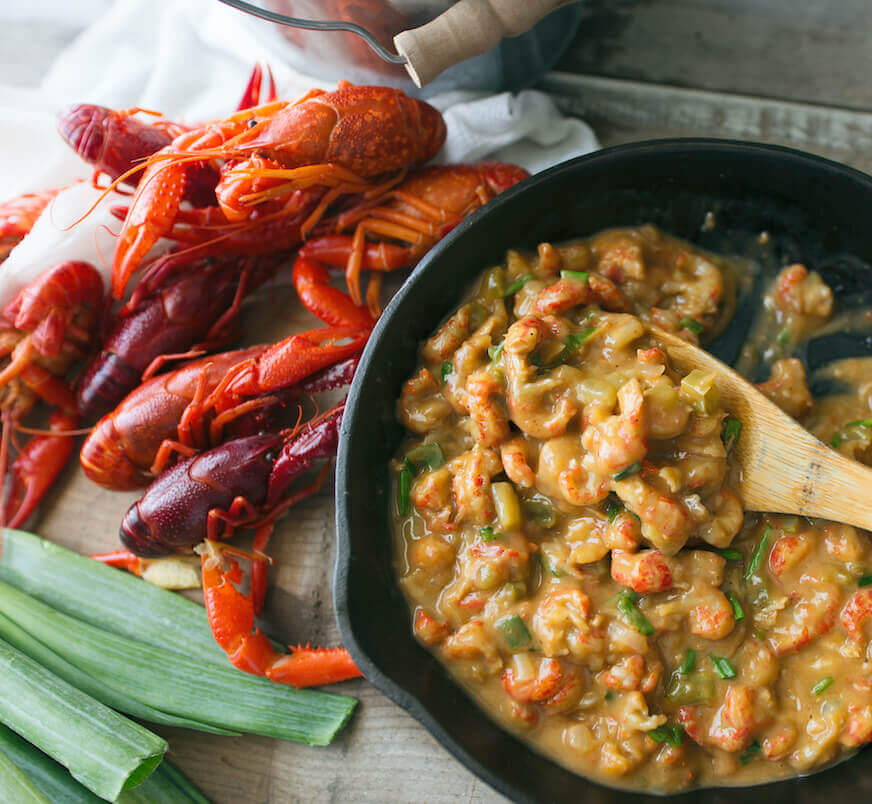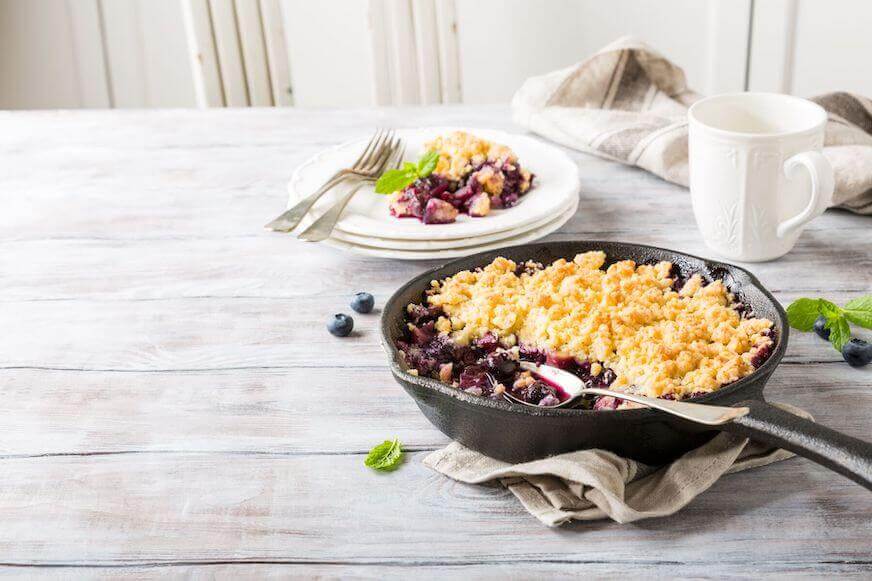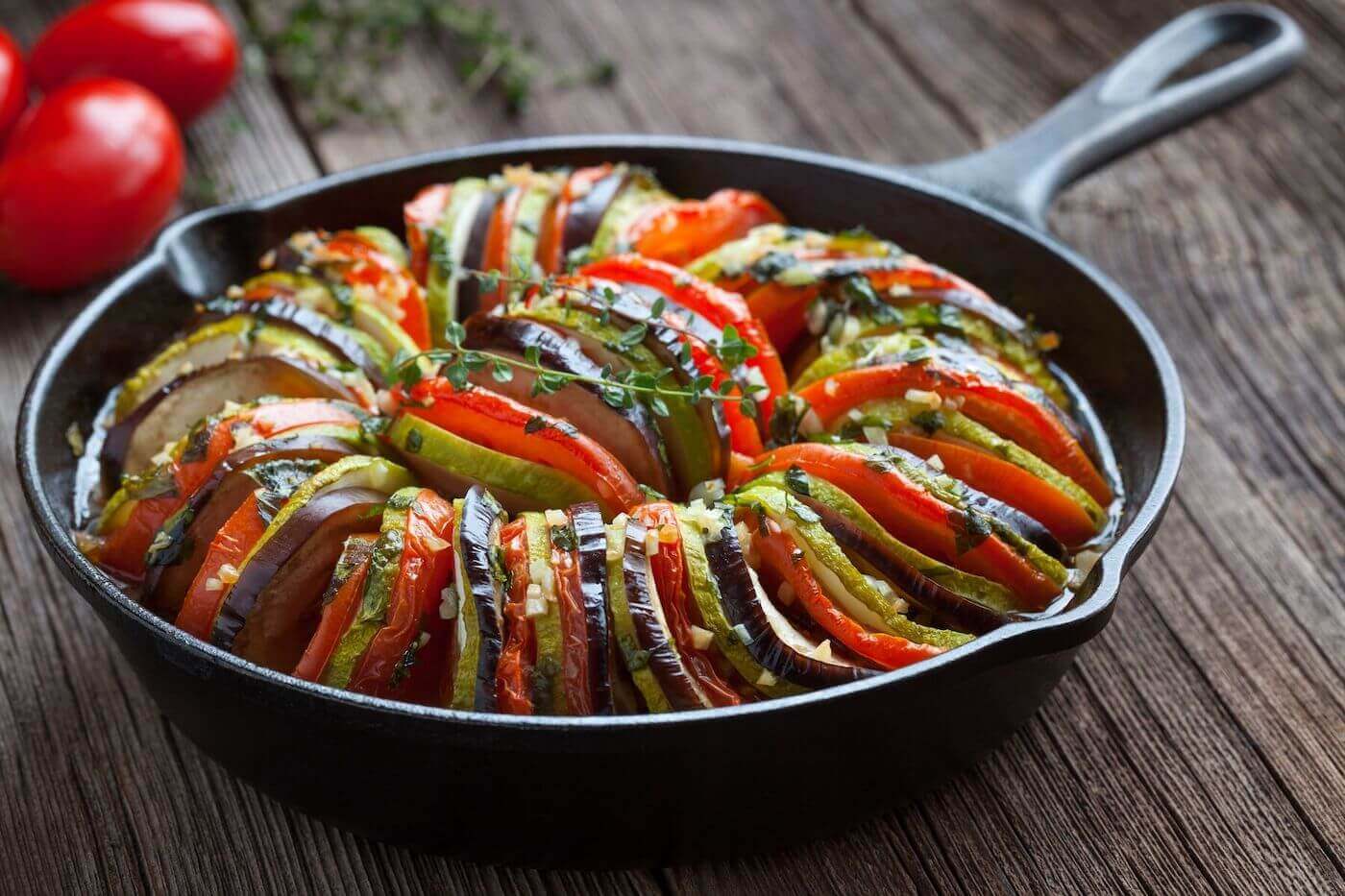How to Cook with a Cast Iron Skillet

There’s something irreplaceable about cooking with cast iron. Maybe it’s the old-time feel it brings to the kitchen, the recognition that your grandmother cooked with the same skillet you now use, or the sense of unfaltering reliability.
While cast iron is surely durable, there can be a learning curve to properly using and caring for these skillets. If you’re wondering how to cook with a cast iron skillet, join us as we share ideas and tips.
Cast Iron Skillet Basics
You’ve probably heard both terrifying tales about poorly seasoned cast iron as well as charming stories about individuals bringing rusty clay-colored iron back to the brink of perfection. Simply put, seasoning is essential to cast iron, but it isn’t something you should be scared of.
So, what does seasoning cast iron even mean? Seasoning is the process of adding a thin layer of fat to the iron and then heating it to a high temperature. As the fat cooks, it polymerizes with iron particles to form the desirable non-stick coating. If you’ve found your skillet has lost its seasoning, simply spread a thin layer of neutral oil with a high smoke point—safflower oil, sunflower oil, and vegetable oil are all good options—on the pan and then place it in a 400ºF oven for one hour.

Cast iron can be used to sauté dishes such as crawfish étouffeé.
Cast iron holds heat well, which means it will stay warm even after you take it off the heat. While this is great for keeping food warm, you should be sure to be careful with handling pans you’ve just taken out of the oven.
Another benefit of cast iron is that it works well with all kinds of heat sources. That means you can place it on an electric stove, gas burner, oven, grill, open flames, and more!
How to Cook with a Cast Iron Skillet
As mentioned above, a cast iron skillet is quite a versatile cooking tool. Here are some cooking methods to try out.
Pan Frying
Since cast iron evenly distributes heat and holds it well, it works great for sautéing garlic and onions, pan-frying eggs, and searing steak and pork chops.
If you find that your food is sticking to the cast iron, one of two issues could be to blame. First, check that your cast iron is well-seasoned. If the pan appears dull rather than shiny, it’s likely time to reseason. And if your pan has the patina finish of well-seasoned cast iron, you may still need to apply a bit of oil if you’re cooking low-fat foods like vegetables. This layer of fat will also season your pan as the food cooks.
Baking
You can also use a cast iron skillet to bake everything from cookie cakes to cornbread to pizza.
If you’d like to keep the crust of what you’re baking delicate and tender, place your food into a room-temperature cast iron and then place the skillet in the oven. Preheating the cast iron and then adding the food will lead to a crispier crust and satisfying crunch.
Since cast iron works with various heat sources, you can also start a dish like braised pork shoulder on the stove and finish it in the oven.

Cast iron works for baked dishes like this fruit cobbler.
Braising
Cast iron’s ability to hold even heat makes it a great choice for braising. After you brown meats or vegetables by searing them on the stove, you can add your braising liquid and slowly cook until the ingredients become fork-tender. Take note that braising typically takes place in a covered pan, so you may need to find a lid to fit your skillet.
However, before you reach for a cast iron skillet or crock, take note of the braising liquid. Acidic solutions like those made from red wine and tomato sauce can remove the pan’s seasoning, so it’s best to opt for an enameled skillet in these cases.
Cook Over an Open Fire
Since cast iron is quite durable, it can hold up to the high and direct heat of an open flame. That means you can take it outdoors to use over a campfire or nestle it into the coals in a wood stove.
The smokey flavor that a fire presents works well with steaks, sausages, potatoes, and more. You can also use the combination of cast iron and fire to slowly let flavors meld together in dishes such as chili, curry, and stew.
How to Clean a Cast Iron Skillet
Contrary to popular belief, washing cast iron with dish soap will not remove the seasoned coating. However, scrubbing the pan with a scouring pad or using it to cook acidic foods can remove the seasoning. So, how should you clean a cast iron skillet?
First, timing is key! It’s best to wash your skillet as soon as it’s cool enough to handle but before any food bits adhere to the pan. Spray it with warm water, apply a bit of mild soap, and scrub using a soft-bristled brush. If you find that food is still sticking to the pan, you can add a bit of water and allow it to simmer for a few minutes to loosen any stuck-on debris.
Learn More About Kitchen Equipment
As with most things in life, learning how to cook with cast iron takes some time. Now that you know the basics of cast iron as well as the ways it can be used, it’s time to head to the kitchen and experiment.
If you feel you’d like a bit more instruction to guide you in the kitchen, you can check out online cooking classes. These classes can provide you with the expertise from Auguste Escoffier School of Culinary Arts and America’s Test Kitchen and cover topics such as Cook It In Cast Iron and Weeknight Meals.
And if you find you’d like even more advanced culinary instruction, you can consider enrolling in culinary school. Escoffier offers programs in the Culinary Arts, Baking & Pastry Arts, Plant-Based Culinary Arts, and more.
Culinary & Pastry Career Survey
Culinary & Pastry Career Survey
What's your ideal culinary career? Answer 20 simple questions and see if your dream career gets revealed to you.

We’ve compiled of all of the essential questions into one handy guide: Career options, description of skill requirements, and more!


- 5 Tips for Making the Best Burritos
- Everything You’ll Need to Make Perfect Doughnuts
- Cheddar Cheese: An Origin Story
This article was originally published on August 10, 2015, and has since been updated.


